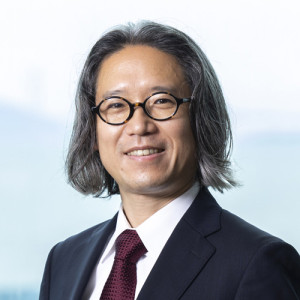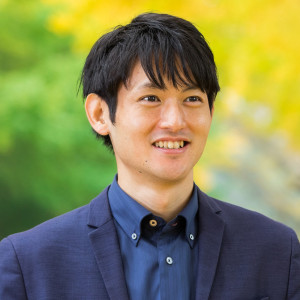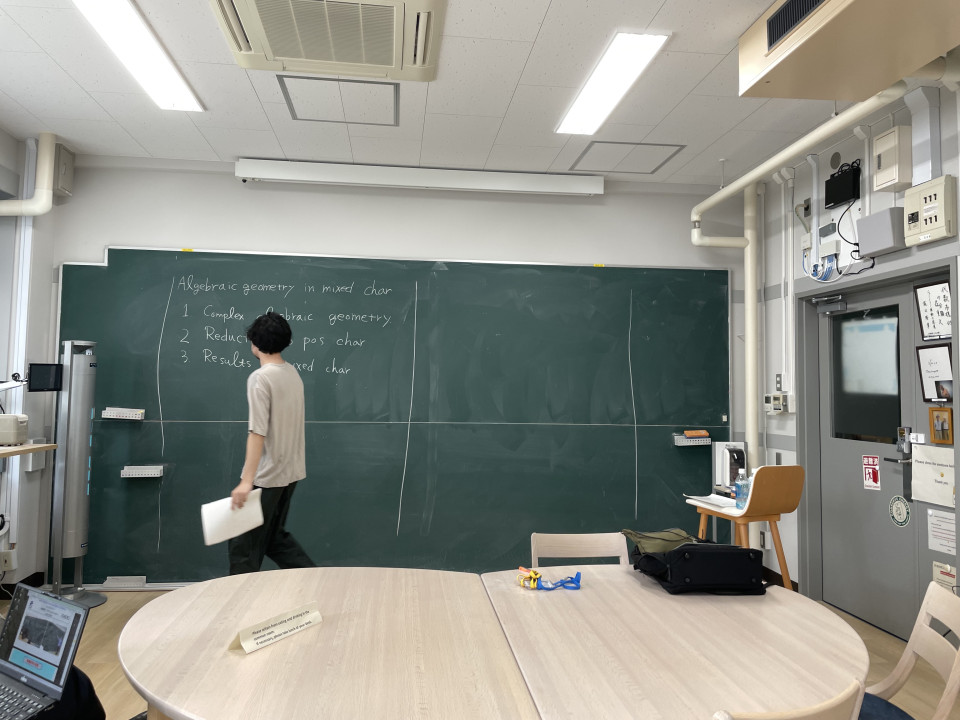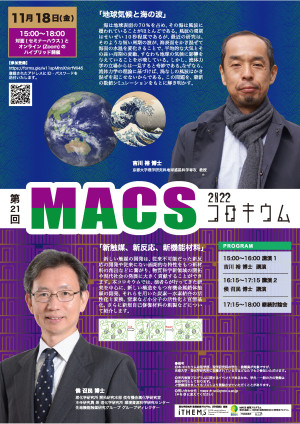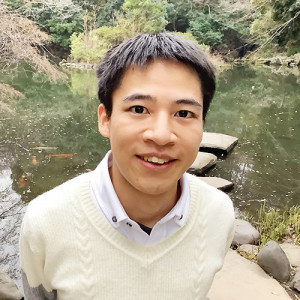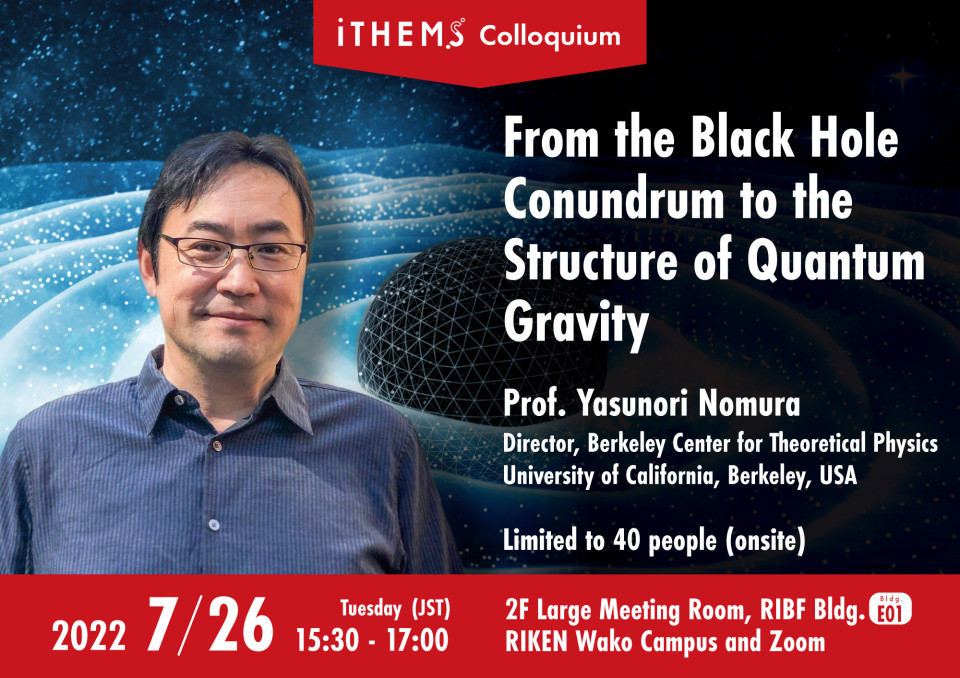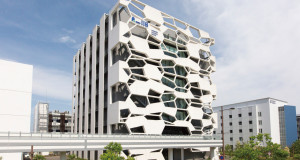Volume 205
Back to Newsletter List
Research News
RIKEN Research: Flitting between the wings of a butterfly
2022-06-28
Just making small tweaks to certain variables could potentially modify extreme weather events such as sudden downpours, computer simula- tions by two RIKEN researchers have shown. Scientists have long desired to develop ways to control the weather. Research in this area has intensified due to climate change, which is giving rise to more extreme weather events. Present methods for modifying the weather have limited success. Seeding the atmosphere can induce rain, but only when the atmosphere is already in a state where it might rain. Geoen- gineering projects have been envisioned, but they have yet to be conducted due to concerns about unpredicted long-term effects. As a promising approach, Takemasa Miyoshi and Qiwen Sun, both of the RIKEN Center for Computational Science, have looked to chaos theory to assess the possibility of mitigating weather events such as torrential rain by making small changes. Instead of con- sidering the weather system in all its complexity, they focused on a far simpler system—the butterfly attractor.
To read more, please see related links.
Research News
RIKEN Research: Worming out of the black-hole information paradox
2022-06-28
RIKEN physicist and two colleagues have found that a wormhole—a theoretical bridge connecting distant regions of the Universe—may help to shed light on the mystery of what happens to information about matter consumed by black holes.
Einstein’s theory of general relativity predicts that nothing that falls into a black hole can escape its clutches. But in the 1970s, Stephen Hawking calculated that black holes should emit radiation when quantum mechanics, the theory governing the microscopic realm, is considered. “This is called black hole evaporation because the black hole shrinks, just like an evaporating water droplet,” explains Kanato Goto of the RIKEN Interdisciplinary Theoretical and Mathematical Sciences.
To read more, please see related links.
Seminar Report
iTHEMS Math Seminar by Dr. Shou Yoshikawa on June 10, 2022
2022-06-27
On June 10, Shou Yoshikawa gave an introductory talk on his research field. He started his talk by explaining what is an algebraic geometry in mixed characteristic. He then explained some recent results on this subject.
Reported by Keita Mikami
Algebraic geometry in mixed characteristic
June 10 (Fri) 14:00 - 16:30, 2022
Upcoming Events
Seminar
ABBL-iTHEMS Joint Astro Seminar
Long-term evolution of a supernova remnant hosting a double neutron star binary
July 1 (Fri) 14:00 - 15:00, 2022
Tomoki Matsuoka (Ph.D. Student, Graduate School of Science, Kyoto University)
Stellar mass loss is one of the crucial elements which determine the fate of progenitors of core-collapse supernovae (SNe). Since the material released from the progenitor will be distributed as circumstellar medium (CSM), it can also have an influence on the subsequent evolution of the SN or supernova remnant (SNR). Despite its importance, mass loss histories predicted by stellar evolution models have not been incorporated with modeling for SNRs. As a first step, we investigate the dynamical evolution of an ultra-stripped supernova remnant (USSNR), originated from a type of core-collapse SN explosion proposed to be a candidate formation site of a double neutron star binary. By accounting for the mass-loss history of the progenitor binary using a model developed by a previous study, we construct the large-scale structure of the CSM up to a radius ∼100 pc, and simulate the explosion and subsequent evolution of a USSN surrounded by such a CSM environment. We find that the CSM encompasses an extended region characterized by a hot plasma with a temperature ∼10^8 K located around the termination shock of the wind from the progenitor binary (∼10 pc), and the USSNR blast wave is drastically weakened while penetrating through this hot plasma. Radio continuum emission from a young USSNR is sufficiently bright to be detectable if it inhabits our galaxy but faint compared to the observed Galactic SNRs. In this seminar I will talk about the background of the connection between the models for stellar evolution and SNRs, the details of our methods, and future prospects.
Venue: via Zoom
Event Official Language: English
Seminar
iTHEMS Theoretical Physics Seminar
Gradient flow exact renormalization group 1
July 5 (Tue) 13:30 - 17:00, 2022
Hiroshi Suzuki (Professor, Graduate School of Science, Kyushu University)
Wilson’s exact renormalization group (ERG), which tells how a system changes under the scale transformation, provides a fundamental framework to define quantum field theory even beyond the perturbation theory. It has however been known that it is difficult to preserve a manifest gauge symmetry in ERG because of the usage of the momentum cutoff in ERG. Here, we propose a possible modification of ERG, the gradient flow exact renormalization (GFERG), which preserves a manifest gauge symmetry being based on a gauge-covariant diffusion equation. I explain the basic idea and properties of GFERG. If time permits, I want to present a possible application of GFERG to the consideration of the axial anomaly.
Venue: via Zoom
Event Official Language: English
Seminar
iTHEMS Theoretical Physics Seminar
Gradient flow exact renormalization group 2
July 6 (Wed) 13:30 - 17:00, 2022
Hiroshi Suzuki (Professor, Graduate School of Science, Kyushu University)
Wilson’s exact renormalization group (ERG), which tells how a system changes under the scale transformation, provides a fundamental framework to define quantum field theory even beyond the perturbation theory. It has however been known that it is difficult to preserve a manifest gauge symmetry in ERG because of the usage of the momentum cutoff in ERG. Here, we propose a possible modification of ERG, the gradient flow exact renormalization (GFERG), which preserves a manifest gauge symmetry being based on a gauge-covariant diffusion equation. I explain the basic idea and properties of GFERG. If time permits, I want to present a possible application of GFERG to the consideration of the axial anomaly.
Venue: via Zoom
Event Official Language: English
Seminar
iTHEMS Biology Seminar
Virus vs. Bacteria: Art of the war in the microbial world
July 7 (Thu) 16:00 - 17:00, 2022
Namiko Mitarai (Associate Professor, Niels Bohr Institute, University of Copenhagen, Denmark)
A virulent phage (virus that infects bacteria) infection to a host bacterial cell results in lysis of the cell, where possibly hundreds of phage particles are released after a latency time. The phage pressure is believed to be an important factor to shape the microbial communities and a driving force of their evolution, and yet we are far from having a full picture of their warfare. In this talk, I highlight a few factors that play significant roles in phage-bacteria interactions and their coexistence, such as the effect of herd immunity and the importance of the spatial structure in a few cells scale to the colony scale.
*Her talk will be accessible to physicists, mathematicians, and also biologists.
Venue: via Zoom
Event Official Language: English
Colloquium
MACS ColloquiumSupported by iTHEMS
The 21st MACS Colloquium
November 18 (Fri) 15:00 - 18:00, 2022
Yutaka Yoshikawa (Professor, Division of Earth and Planetary Sciences, Graduate School of Science, Kyoto University)
Zhaomin Hou (Chief Scientist, Organometallic Chemistry Laboratory, RIKEN Cluster for Pioneering Research (CPR) / Group Director, Advanced Catalysis Research Group, RIKEN Center for Sustainable Resource Science (CSRS))
15:00-16:00 Talk by Dr. Yutaka Yoshikawa (Division of Earth and Planetary Sciences, Kyoto University) "The Earth Climate and Ocean Surface Waves"
16:15-17:15 Talk by Dr. Zhaomin Hou (Organometallic Chemistry Laboratory, RIKEN Cluster for Pioneering Research / Advanced Catalysis Research Group, RIKEN Center for Sustainable Resource Science) "New Catalysts, New Reactions and New Functional Materials"
17:15-18:00 Discussion
Venue: via Zoom
Event Official Language: Japanese
Seminar
Information Theory Seminar
Speed limits for macroscopic transitions
July 13 (Wed) 13:30 - 15:00, 2022
Ryusuke Hamazaki (RIKEN Hakubi Team Leader, Nonequilibrium Quantum Statistical Mechanics RIKEN Hakubi Research Team, RIKEN Cluster for Pioneering Research (CPR))
Speed of state transitions in macroscopic systems is a crucial concept for foundations of nonequilibrium statistical mechanics as well as various applications in quantum technology represented by optimal quantum control. While extensive studies have made efforts to obtain rigorous constraints on dynamical processes since Mandelstam and Tamm, speed limits that provide tight bounds for macroscopic transitions have remained elusive. Here, by employing the local conservation law of probability, the fundamental principle in physics, we develop a general framework for deriving qualitatively tighter speed limits for macroscopic systems than many conventional ones. We show for the first time that the speed of the expectation value of an observable defined on an arbitrary graph, which can describe general many-body systems, is bounded by the “gradient” of the observable, in contrast with conventional speed limits depending on the entire range of the observable. This framework enables us to derive novel quantum speed limits for macroscopic unitary dynamics. Unlike previous bounds, the speed limit decreases when the expectation value of the transition Hamiltonian increases; this intuitively describes a new trade-off relation between time and the quantum phase difference. Our bound is dependent on instantaneous quantum states and thus can achieve the equality condition, which is conceptually distinct from the Lieb-Robinson bound. We also find that, beyond expectation values of macroscopic observables, the speed of macroscopic quantum coherence can be bounded from above by our general approach. The newly obtained bounds are verified in transport phenomena in particle systems and nonequilibrium dynamics in many-body spin systems. We also demonstrate that our strategy can be applied for finding new speed limits for macroscopic transitions in stochastic systems, including quantum ones, where the bounds are expressed by the entropy production rate. Our work elucidates novel speed limits on the basis of local conservation law, providing fundamental limits to various types of nonequilibrium quantum macroscopic phenomena.
Reference
- Ryusuke Hamazaki, Speed Limits for Macroscopic Transitions, PRX Quantum 3, 020319 (2022), doi: 10.1103/PRXQuantum.3.020319
Venue: Hybrid Format (Common Room 246-248 and Zoom)
Event Official Language: English
Seminar
NEW WG Seminar
Superconducting-like heat current: Effective cancellation of current-dissipation trade-off by quantum coherence
July 25 (Mon) 13:30 - 15:00, 2022
Tajima Hiroyasu (Assistant Professor, Graduate School of Informatics and Engineering, The University of Electro-Communications)
Recent developments in statistical mechanics have revealed a tradeoff between heat current and dissipation [1,2]. In various situations, this current-dissipation tradeoff represents a relationship between thermal energy flow and entropy increase, similar to Joule’s law W=RI^2.
On the other hand, the coherence effect on the current-dissipation tradeoff has not been thoroughly analyzed. Here, we systematically analyze how coherence affects the current-dissipation tradeoff [3]. The results can be summarized in the following three rules:
- Quantum coherence between different energy levels strengthens the trade-off. In other words, the ratio between the square of the heat current and the entropy production ratio corresponding to electrical resistance R (hereafter referred to as "thermal resistance") is increased by the superposition of different energy levels.
- Coherence between degeneracies weakens the trade-off. That is, thermal resistance is weakened by coherence between degeneracies.
- With enough coherence between degeneracies, we can cancel the trade-off effectively and make the thermal resistance approximately zero. Then, macroscopic heat flow without entropy increase is realized.
These three results directly reveal the coherence effects on heat engine performance. That is, coherence between different energy levels reduces the performance, while coherence between degeneracies increases it. And when there is a sufficient amount of coherence between degeneracies, the efficiency can asymptotically reach the Carnot efficiency (η=η_{Car}-O(1/N)) while the power is O(N).
References
- N. Shiraishi, K. Saito, H. Tasaki, Universal Trade-Off Relation between Power and Efficiency for Heat Engines, Phys. Rev. Lett. 117, 190601 (2016), doi: 10.1103/PhysRevLett.117.190601
- A. C. Barato, U. Seifert, Thermodynamic Uncertainty Relation for Biomolecular Processes, Phys. Rev. Lett. 114, 158101 (2015), doi: 10.1103/PhysRevLett.114.158101
- H. Tajima, K. Funo, Superconducting-like Heat Current: Effective Cancellation of Current-Dissipation Trade-Off by Quantum Coherence, Phys. Rev. Lett. 127, 190604 (2021), doi: 10.1103/PhysRevLett.127.190604
Venue: via Zoom
Event Official Language: English
Colloquium
iTHEMS Colloquium
From the Black Hole Conundrum to the Structure of Quantum Gravity
July 26 (Tue) 15:30 - 17:00, 2022
Yasunori Nomura (Professor/Director, Berkeley Center for Theoretical Physics, University of California, Berkeley, USA)
Having a complete quantum theory of gravity has long been a major goal of theoretical physics. This is because a naive merger of quantum mechanics and general relativity — though it works in certain limited regimes — suffers from major theoretical problems. A particularly acute one arises when one considers the quantum mechanics of black holes: two fundamental principles of modern physics — the conservation of probability in quantum mechanics and the equivalence principle of general relativity — seem to be incompatible with each other. I will explain how recent theoretical progress begins to address this problem and portray the emerging picture of how spacetime and gravity behave at the level of full quantum gravity.
Venue: 2F Large Meeting Room, RIBF Building, RIKEN Wako Campus / via Zoom
Event Official Language: English
Workshop
iTHEMS Science Outreach Workshop 2022
July 29 (Fri) - 31 (Sun) 2022
This year’s meeting on “Outreach of RIKEN iTHEMS 2022@Kobe&Zoom” will be held from FRI July 29 to SUN July 31, as a face-to-face meeting as much as possible at iTHEMS SUURI-COOL Kobe using ZOOM for the necessary part as well. This is a meeting where members of iTHEMS and science journalists, science writers, etc meet together. iTHEMS researchers explain their research to journalists etc. and science journalists and writers talk about their experiences.
Venue: SUURI-COOL (Kobe), Room S704-S705, Integrated Innovation Building (IIB), Kobe Campus, RIKEN / via Zoom
Event Official Language: Japanese
Workshop
DM3 - Deep insights and Multiple strategies for Deciphering the Mystery of Dark Matter
September 15 (Thu) - 17 (Sat) 2022
Venue: SUURI-COOL (Kobe), Room S704-S705, Integrated Innovation Building (IIB), Kobe Campus, RIKEN / via Zoom
Event Official Language: English
Paper of the Week
Week 5, June 2022
2022-06-30
Title: Role of the effective range in the density-induced BEC-BCS crossover
Author: Hiroyuki Tajima, Haozhao Liang
arXiv: http://arxiv.org/abs/2206.12599v1
If you would like to cancel your subscription or change your email address,
please let us know via our contact form.
Copyright © iTHEMS, RIKEN. All rights reserved.


